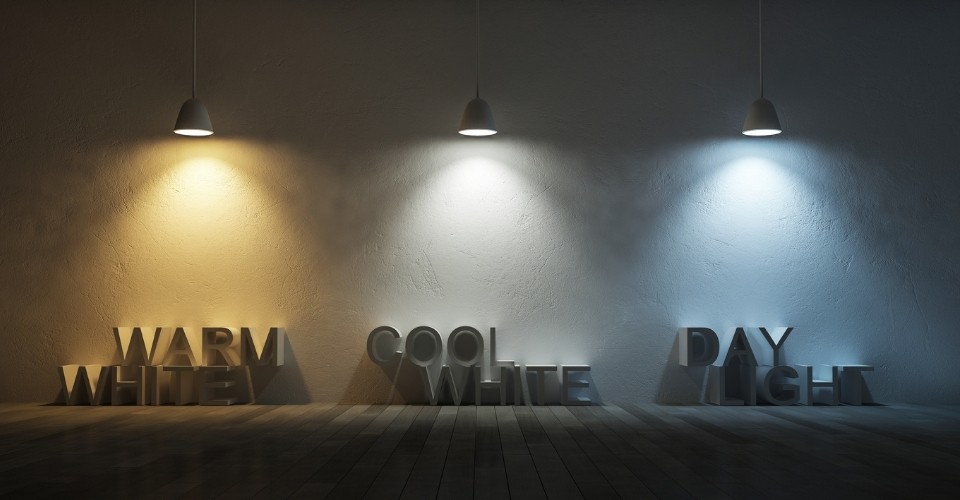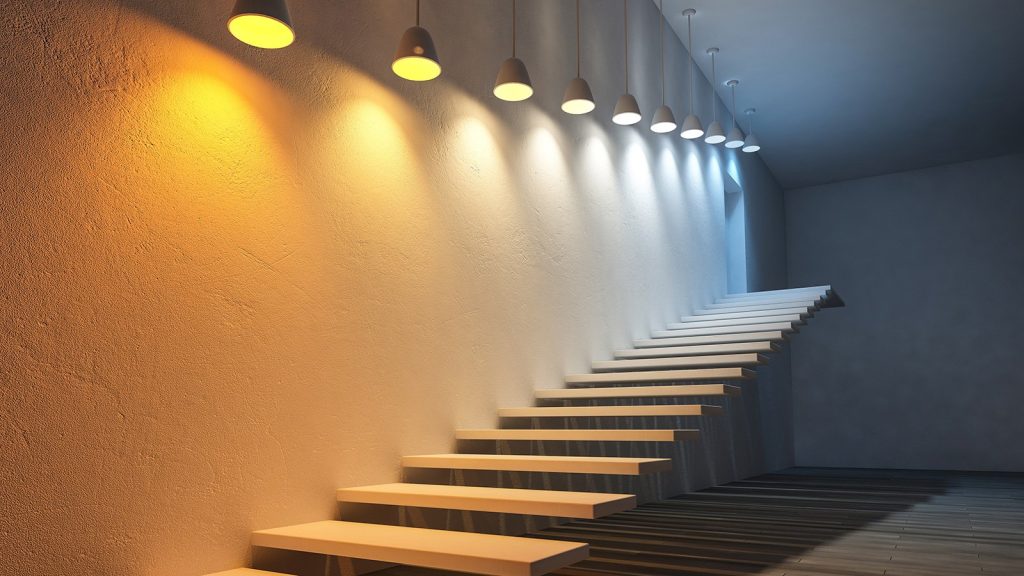Lighting Knowledge
Know Everything About Color Temperature
Correlated Colour temperature (CCT) in lighting describes how the colour of the light appears from a lamp, measured in kelvins (K). Imagine a scale from 1000K (very red) to 10,000K (very blue) (actual scale is wider). The higher up the scale you go, the closer the light resembles blue daylight.
Confusingly, color temperature does not describe the actual temperature of the lamp itself but the color it produces and counter-intuitively; the higher the colour temperature the “cooler” a lamp will look.
| Kelvins | Type | |
|---|---|---|
| 1,000K | Candlelight Red/Yellow | |
| 1800K | Vintage-look Filament Lamp – Orange | Ultra Warm |
| 2400K | Lamp style used in hospitality | Very Warm |
| 2700K | Conventional Halogen and LED Lamp – Yellow | Warm |
| 3000K | Warm White | |
| 4000K | CFL and LED – White | Cool White |
| 5000K | Daylight | |
| 6000K – 7000K | Cool Daylight | |
| 10,000K | Blue Sky – Blue |

Put simply, colour temperature is based on how the colour of heated metal changes as its temperature is increased – turning from red to yellow then blue. You can then determine the temperature of a heated metal by its colour. This range of colours at different temperatures has become useful for describing the colour tint of white light. The colour of light from an LED lamp is approximated or “correlated” to this scale.
Warm or cool ?
There are no rules – the choice is about personal preference and use. If you like the traditional yellowish colour of a conventional lamp then warm white around (2700-3000K ) would be the ideal choice, this is the most popular choice for homes. If you want a modern, clean look, you may prefer the cleaner, brighter feel of a cool white lamp (4000K+). Cool white light contains more blue light and looks brighter to the eye (this is why cool white bulbs have a higher lumen output when compared to the equivalent warm white bulb). It also seems people from sunnier countries tend to prefer white light compared to people from cooler countries who prefer more warm light.
In commercial applications choosing the right colour temperature is important and will depend on the mood you want to create and the products you are promoting – for example freshly baked cookies and bread may look better under a warm white light. A cool white light may not make the product look as appealing but it would be a good idea to do some trials to see what works best.
Where can I use them?
Below are some common areas where the different colours can be used:
- Warm to Warm white – living room, bedroom, hallway
- White to Cool white – kitchen, study, bathroom, cupboard, office, retail
- Daylight – Commercial, retail, art studios
Allow some time to get used to any change especially if changing from warm to cool white.

Mix and Match
There is no reason why you could not have a mixture in the same setting. For example, warm white for the main room lighting and cool white for task lighting over work areas.
Have the best of all worlds with Color Switching downlights!
New LED technology from Integral LED allows you to switch between 3000K (Warm), 4000K (Cool White ) and 5000K (Daylight).
How do I know which one I am buying ?
All Integral retail packs have a clear icon and colour temperature indicated on the packaging. In addition, each lamp will have the colour temperature printed on the base e.g. ” 3000K”.
Due to variations in the manufacturing process and different measurement methods you should consider buying the same model of LED lamp for all the fittings in an area or room. It would also be a good idea to buy spares – as LED technology (as with other technologies such as mobile phones) is always improving and changing.

